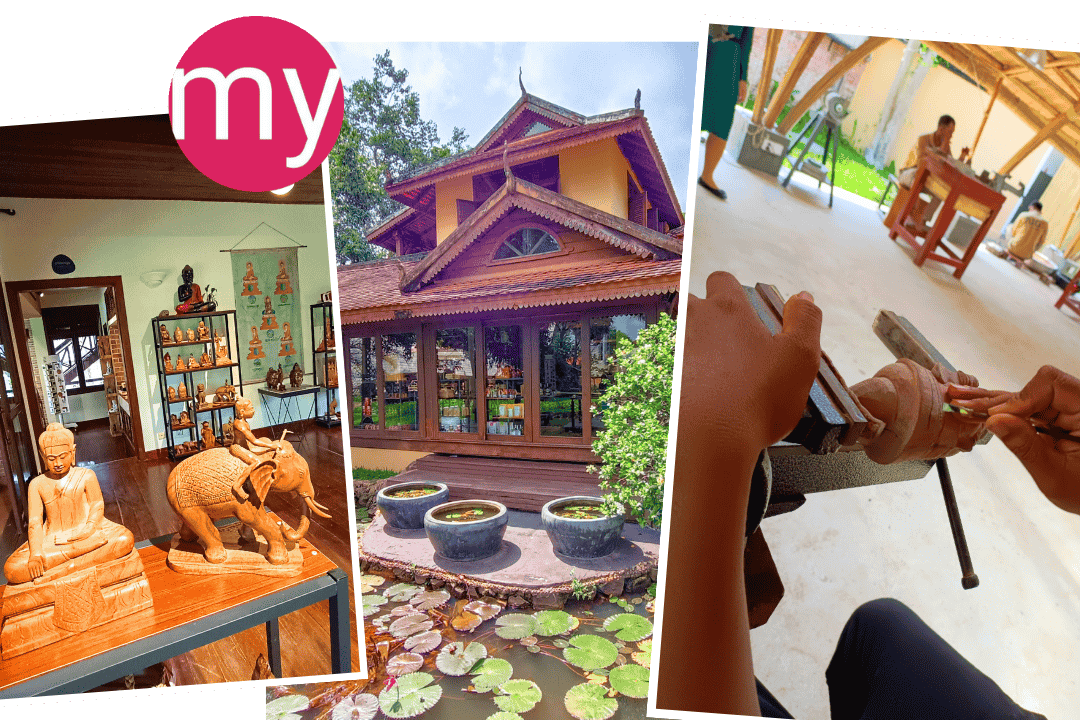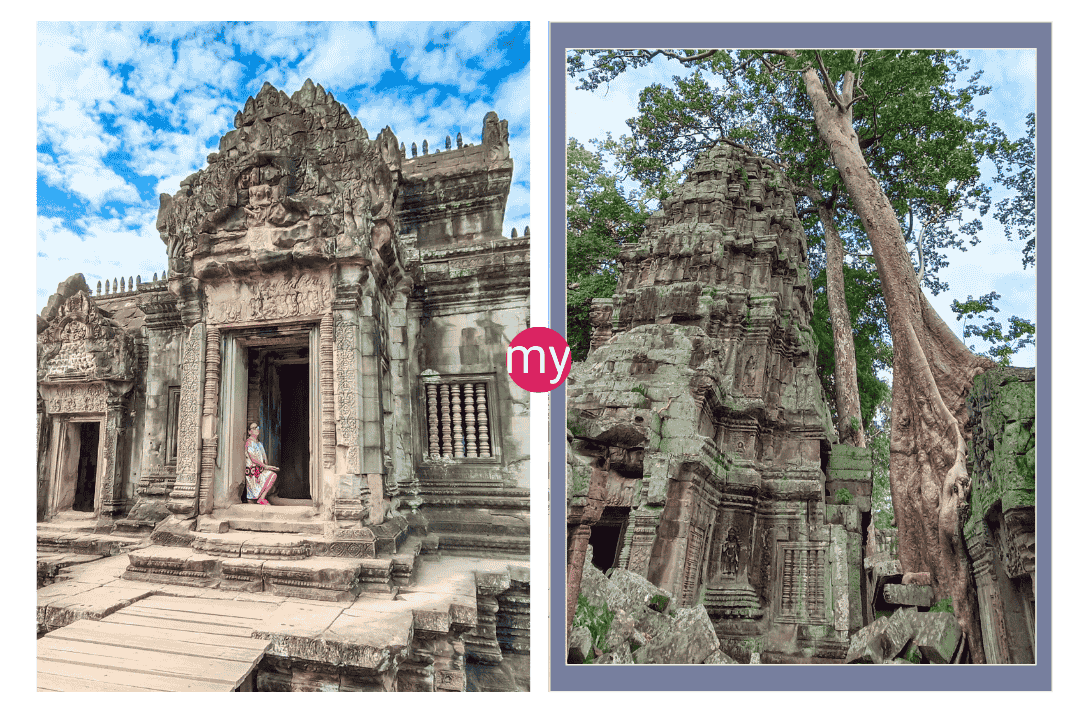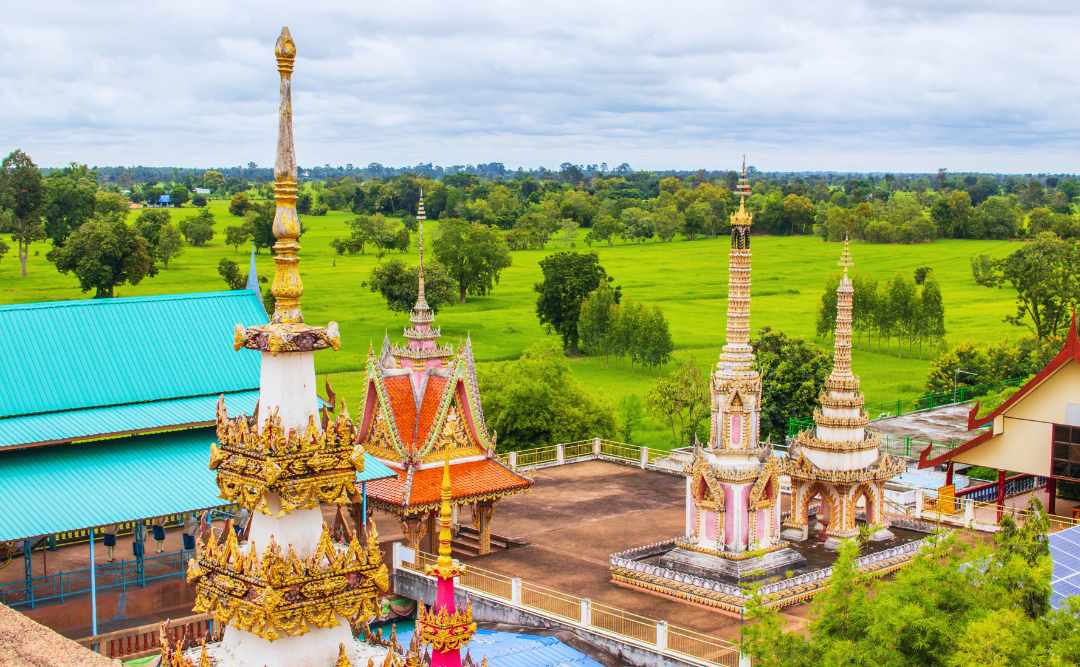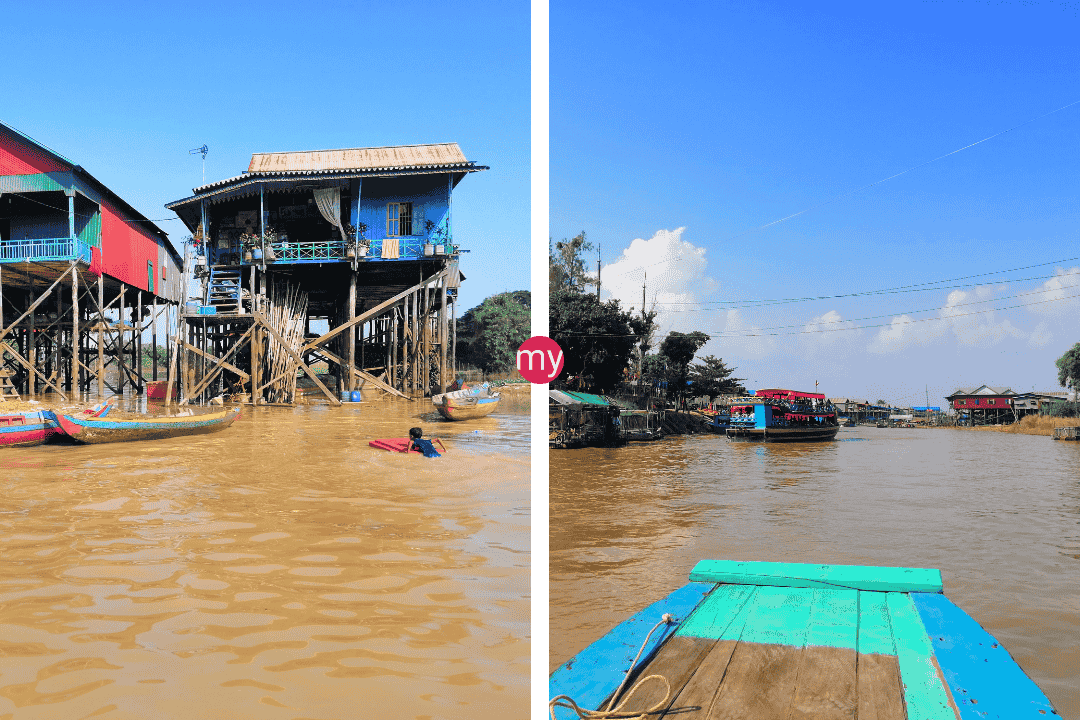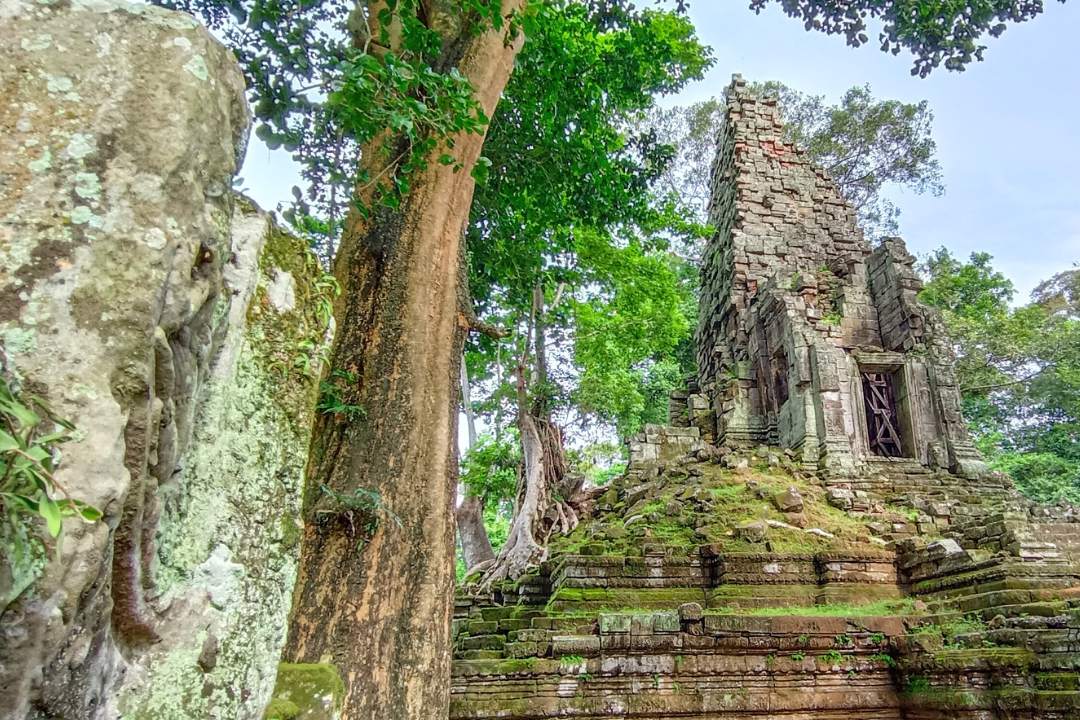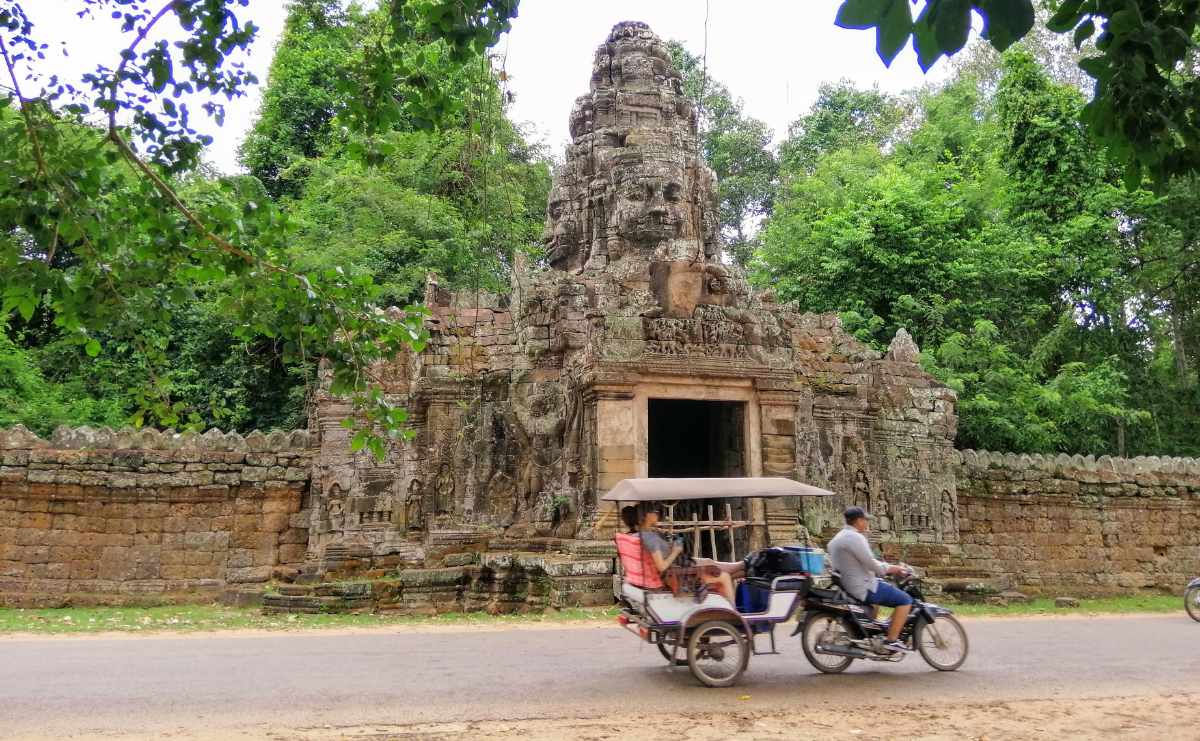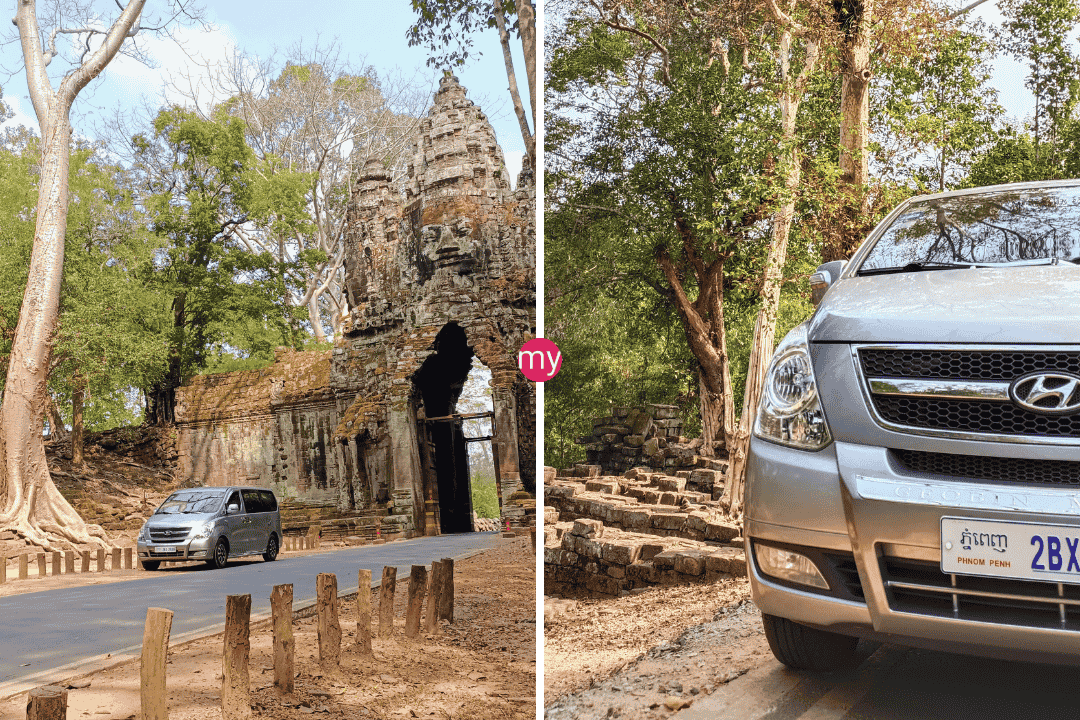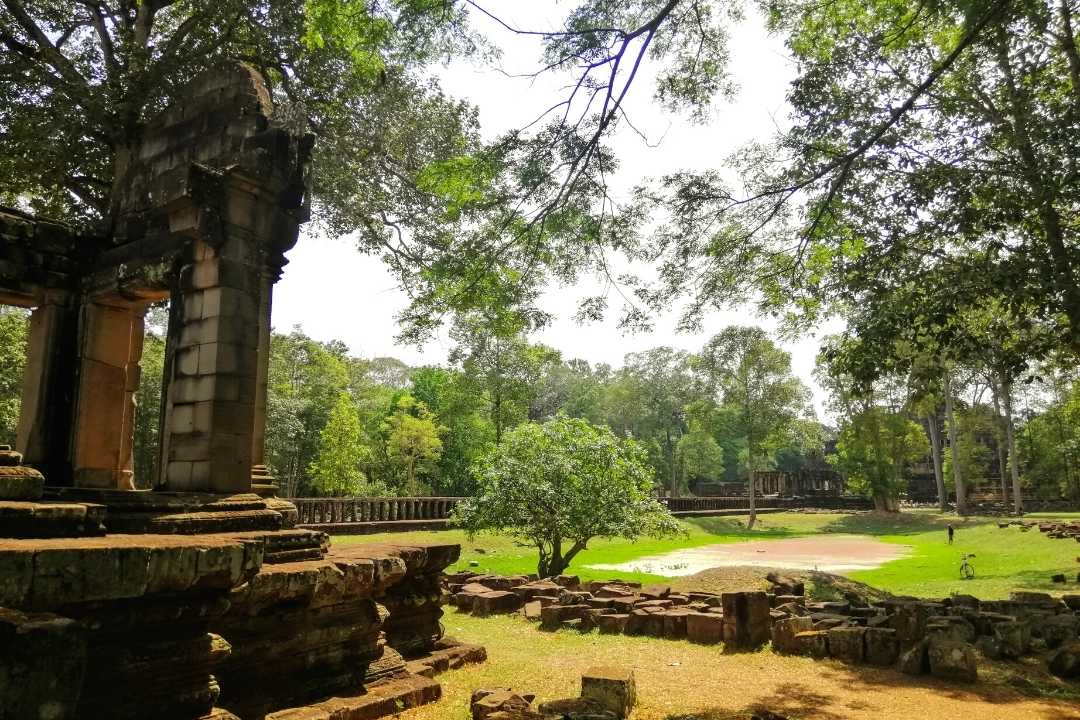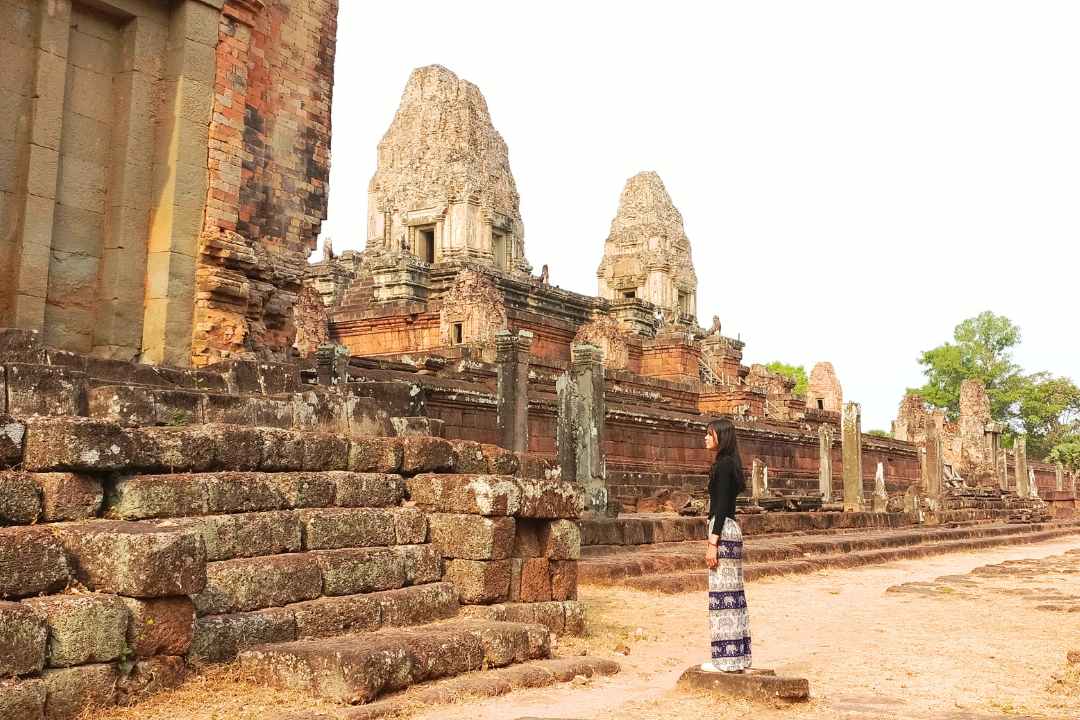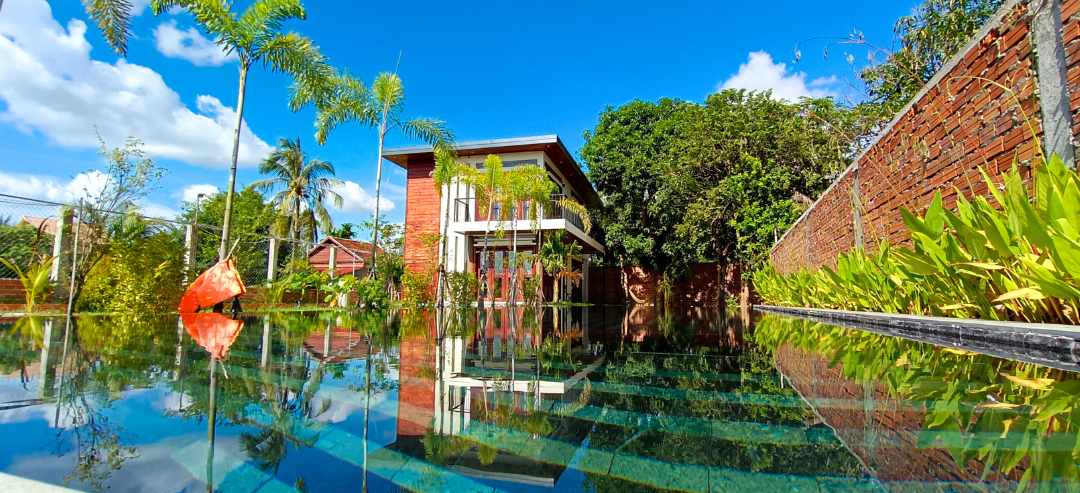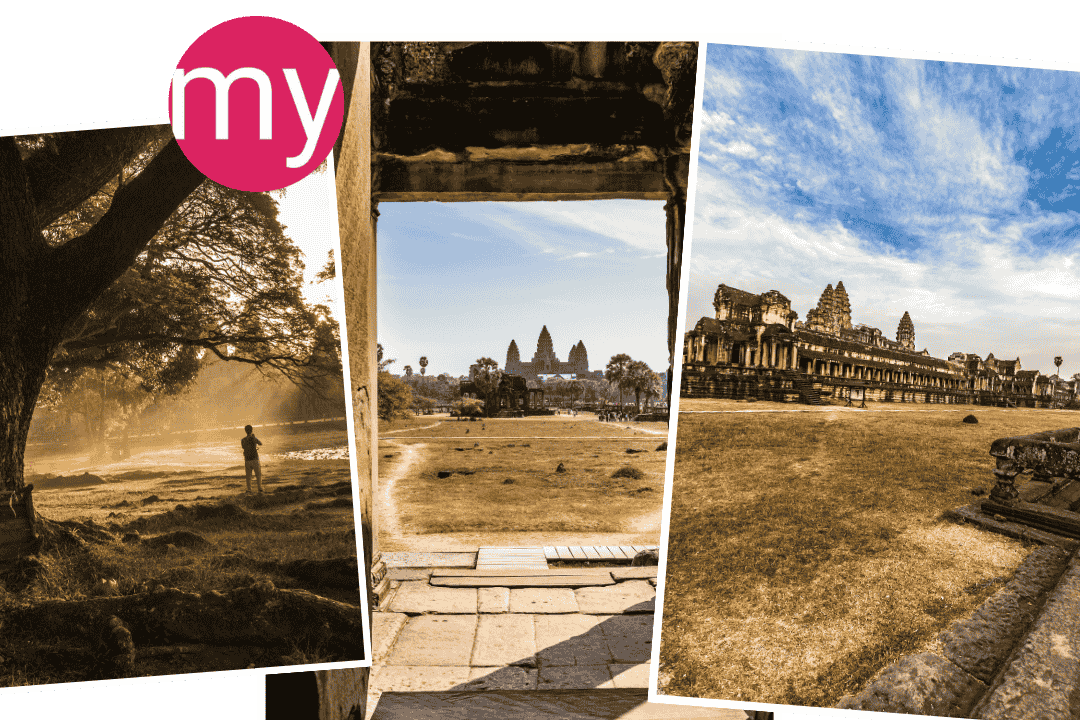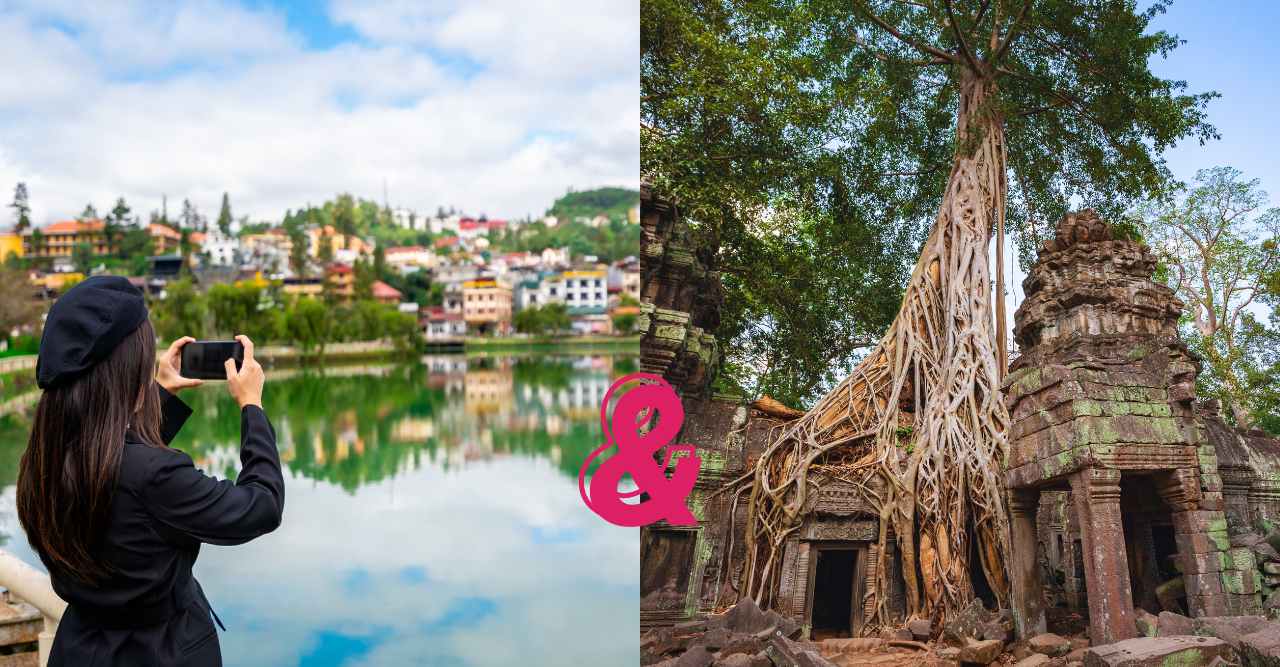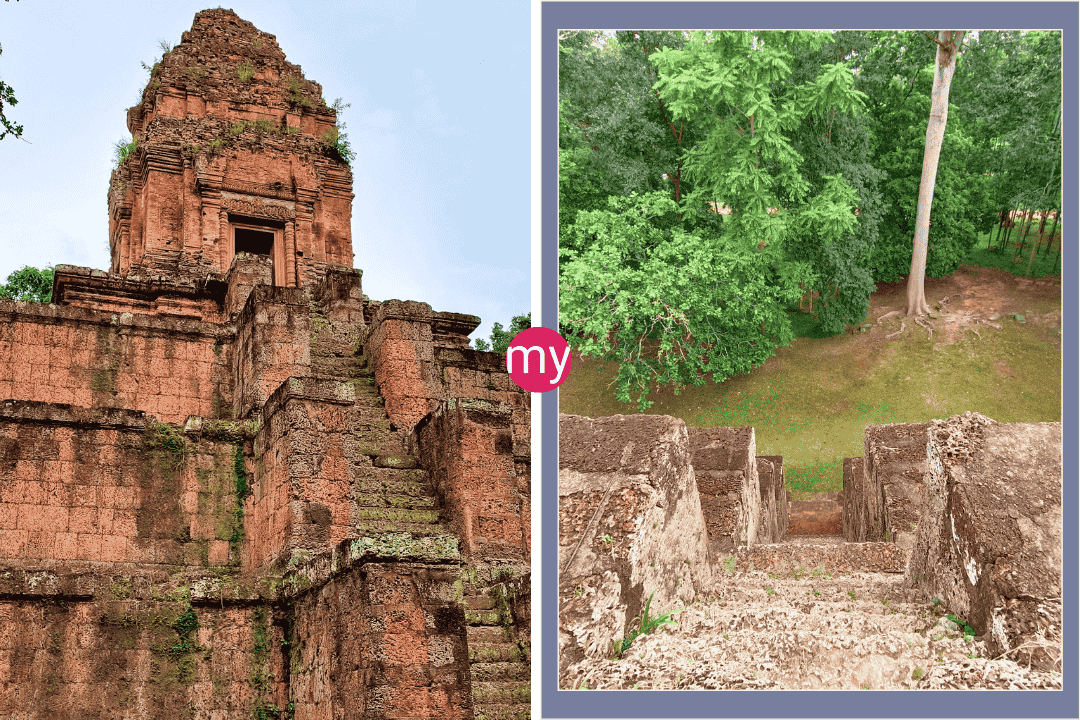Angkor Temples Architectural Glossary
Key Architectural Terms to Decode Angkor's Ancient Structures and Impress Your Travel Companions
Have you ever seen pictures of the big temples at Angkor and wondered how they were made?
Or maybe you’ve been there and thought, “Wow, I want to know more about these!”
Well, you’re in luck! We’re going to learn about the Angkor Temples and their cool building style.
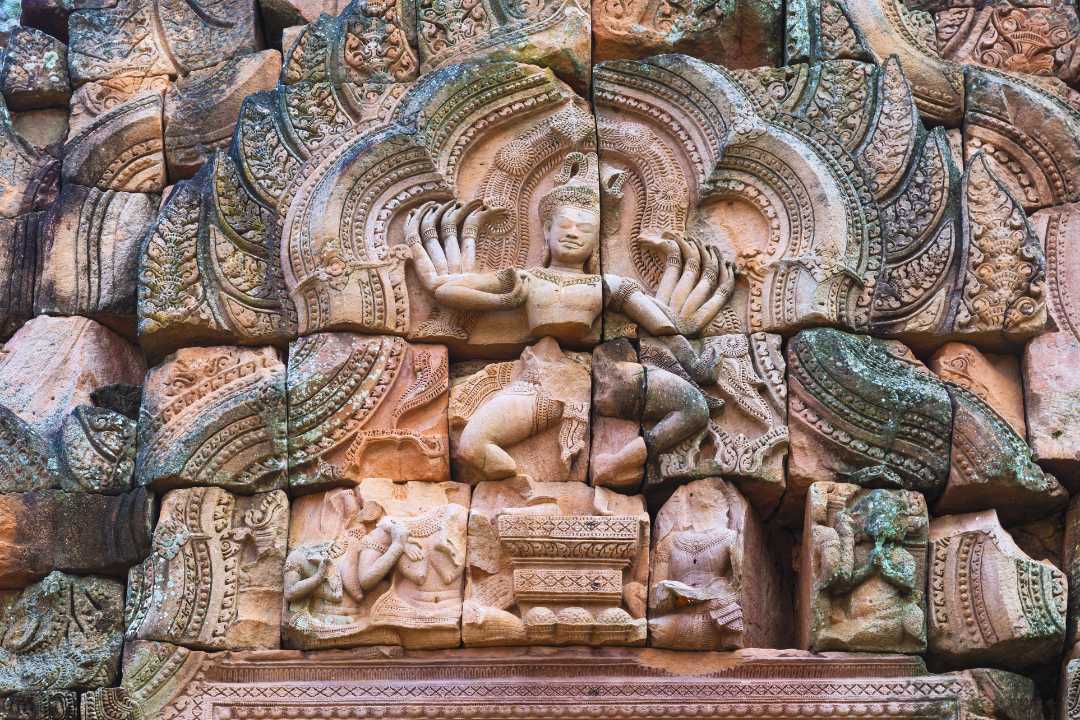
Think about being able to point at different parts of a temple and know what they’re called. That would be pretty cool, right? By the time we’re done, you’ll be able to do just that! You’ll know a lot about Angkor’s old buildings. Let’s be temple detectives and find out about these amazing places!
Here’s a quick list of important building words you should know:
- Sandstone: Main building material, easily carved yet durable.
- Laterite: Tough stone used for structural elements, often hidden.
- Prasat: Central tower, representing Mount Meru.
- Gopura: Monumental gateway or entrance pavilion.
- Naga: Multi-headed serpent sculptures, often used as balustrades.
- Mandapa: Gathering hall or antechamber preceding the main sanctuary.
- Shikhara: Tower-like structure above the main sanctuary.
- Garbhagriha: Inner sanctum, the most sacred part of the temple.
- Apsara: Celestial female dancers carved on temple walls.
- Bas-relief: Narrative carvings on walls depicting stories and scenes.
- Bakan: Uppermost level of a temple-mountain, housing the principal shrine.
- Libraries: Secondary buildings within the temple complex, purpose debated.
- Baray: Massive artificial reservoirs for water management.
- Lingam and Yoni: Abstract representations of Hindu deities Shiva and his consort.
Editor’s Note: Hey there, temple explorers! This article was last updated on September 15, 2024, by our team of local experts in Siem Reap. We’ve made sure all the cool facts and info about Angkor’s amazing temples are fresh and accurate. So get ready to become a temple pro with the latest and greatest knowledge! Happy exploring!
Now, let’s learn more about the cool world of Angkor Temples and their building words!
The Stuff They Used to Build
When you look at an Angkor temple, you’re seeing some really smart old-time building work. They mostly used sandstone and laterite. Sandstone is like nature’s Lego – it’s easy to cut but still strong. Laterite is like the temple’s bones. It’s really tough and was often used for parts you can’t see.
The temples weren’t just thrown together. No way! They were carefully planned. Most temples are square with a big tower in the middle. This isn’t by chance – it means something special. The middle tower, or prasat, stands for a holy mountain called Mount Meru.
Fun fact: Some temples, like the famous Angkor Wat, have five towers in an ‘X’ shape when you look from above.
Pretty neat, right?
2. Gopura: Monumental Gateways
Basic Understanding: A grand entrance gateway to the temple. Imagine walking through a giant, decorated doorway into another world.
Expert Insight: Gopuras are monumental entrance pavilions that punctuate the enclosure walls of Angkorian temples. They serve both practical and symbolic functions, controlling access to sacred spaces while also representing the transition between the mundane and divine realms.
Technical Details:
- Structure: Typically cruciform in plan, with passageways on all four cardinal directions.
- Decoration: Often adorned with intricate bas-reliefs and sculptures, including devatas (minor female deities) and dvarapalas (guardian figures).
- Hierarchy: The size and elaborateness of gopuras often increase as one moves towards the temple’s center, reflecting the increasing sacredness of the space.
Historical Context: The development of gopuras reached its peak during the reign of Jayavarman VII (1181-1218 CE), as seen in the monumental gates of Angkor Thom.
3. Naga: Cosmic Serpents
Basic Understanding: Snake-like creatures that guard temple entrances. These multi-headed serpents are like the superheroes of Khmer myths.
Expert Insight: Nagas are mythical serpents that play a crucial role in Hindu and Buddhist cosmology. In Angkorian architecture, they serve multiple functions: as guardians, as symbols of water and fertility, and as a bridge between earthly and heavenly realms.
Technical Details:
- Depiction: Typically portrayed with odd numbers of heads (3, 5, 7, or 9), fanning out in a cobra-like hood.
- Placement: Often found as balustrades on causeways, bordering steps, or atop gopuras.
- Iconography: Frequently depicted in the “churning of the ocean of milk” scene, a pivotal Hindu creation myth.
Historical Context: The naga motif predates the Angkorian period and has roots in indigenous Southeast Asian beliefs. Its incorporation into Hindu-Buddhist iconography demonstrates the syncretic nature of Khmer religion.
Mr. Khroma, a traditional storyteller, elaborates: “Nagas embody the dual nature of water in Cambodian life – life-giving during the monsoon, potentially destructive during floods. They remind us of the balance needed in our relationship with nature.”
The Most Important Part of the Temple
In the middle of most Angkor temples, you’ll find the main holy place. This is where the most important religious events would have happened. Before this main area, there’s often a mandapa, a room where people would gather.
The main holy place usually has a shikhara on top, which is a tower-like part that reaches up to the sky. The shape of the shikhara isn’t just for looks – it’s made to make you look up, like you’re going from earth to heaven.
Inside the main area, you might find a small room called the garbhagriha. This is the most holy place in the temple. It’s where the main god of the temple would have been kept.
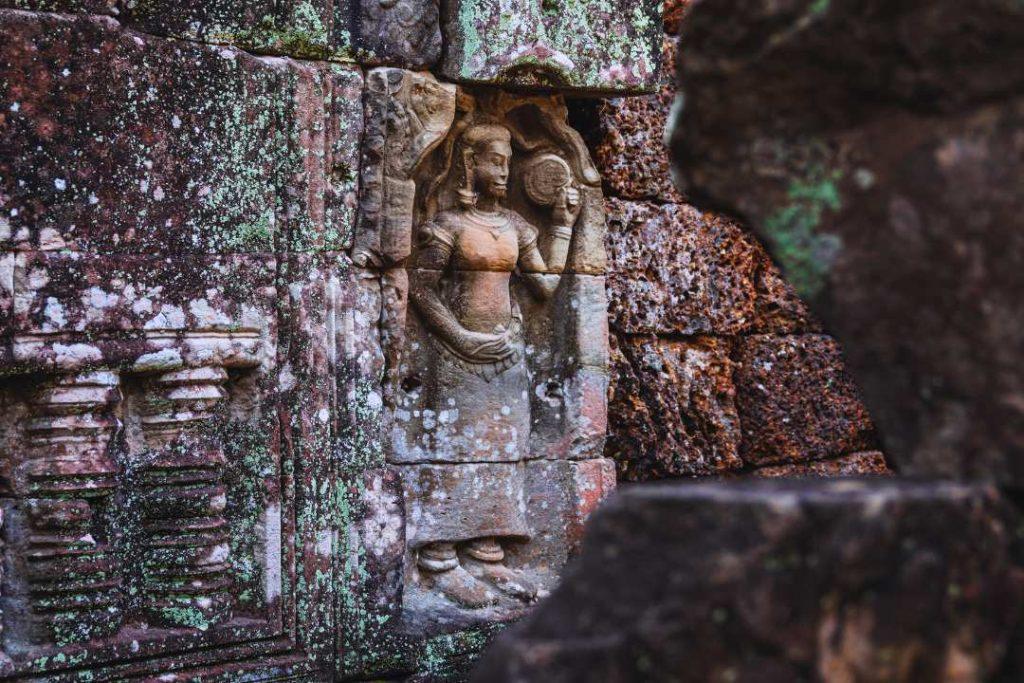
4. Apsara: Celestial Dancers
Basic Understanding: Beautiful female spirits carved on temple walls. They’re like the pop stars of the spirit world, famous for their dancing.
Expert Insight: Apsaras are celestial nymphs in Hindu and Buddhist mythology, renowned for their beauty and graceful dancing. In Angkorian art, they serve as decorative elements and symbolic representations of divine beauty and artistic perfection.
Technical Details:
- Artistic Style: Apsara depictions evolved over time, with changes in hairstyles, adornments, and poses marking different periods of Angkorian art.
- Placement: Found on temple walls, pillars, and lintels, often in dance-like poses or as supportive figures.
- Variations: Devatas, often confused with apsaras, are more static, frontal depictions of female divinities.
Historical Context: The proliferation of apsara images, particularly at Angkor Wat, coincides with a period of increased emphasis on the divine nature of Khmer kingship.
5. Bas-relief: Narrative Sculptures
Basic Understanding: Carvings on walls that tell stories. Picture a giant comic book made of stone, showing battles and legends.
Expert Insight: Bas-reliefs are sculpted panels that adorn the walls of Angkorian temples, serving as monumental narrative art. They depict religious stories, historical events, and scenes from daily life, providing invaluable insights into Angkorian culture and beliefs.
Technical Details:
- Technique: Carved in low relief, with figures projecting slightly from a flattened background.
- Themes: Common subjects include the Ramayana and Mahabharata epics, historical battles, and cosmological scenes.
- Reading Direction: Many narrative reliefs are designed to be “read” in a specific direction, often clockwise around a temple.
Historical Context: The scale and complexity of bas-reliefs reached their zenith during the 12th century, particularly at Angkor Wat and the Bayon.
Let’s take a quick trip through time to see how Angkor and its amazing temples came to be:
- 802 CE: King Jayavarman II starts the Khmer Empire. This is when Angkor’s story begins!
- 889-915 CE: King Yasovarman I builds the first temples at Angkor. The city is starting to take shape.
- 1113-1150 CE: King Suryavarman II is in charge. This is when Angkor Wat, the most famous of all Angkor temples, is built.
- 1181-1219 CE: King Jayavarman VII builds a lot of things. He makes Angkor Thom, the Bayon, and many other temples. This is like the best time for Angkor building!
- 13th-14th centuries: Angkor starts to have problems. People begin to leave the city.
- 15th century: Most people have left Angkor. The jungle starts to grow over the temples.
- 1860s: A French explorer named Henri Mouhot finds Angkor again. The world falls in love with these amazing old buildings.
- 20th-21st centuries: People start working hard to fix up the temples. We’re still learning new things about Angkor all the time!
6. Mandapa: Sacred Antechambers
Expert Insight: A mandapa is an entrance hall or portico, typically preceding the main sanctuary (prasat) in Angkorian temples. It serves as a transitional space between the outer courtyards and the inner sanctum.
Technical Details:
- Structure: Often rectangular or cruciform in plan, with a roof supported by pillars.
- Function: Used for ritual preparations, gatherings, and as a space for devotees to view the deity in the main sanctuary.
- Variations: Some temples feature multiple mandapas, creating a progressively sacred journey towards the central prasat.
Historical Context: The development of elaborate mandapas reflects the increasing complexity of Angkorian religious ceremonies over time.
7. Bakan: The Upper Terrace
Expert Insight: The bakan refers to the uppermost level of a temple-mountain, where the principal shrine is located. It’s the most sacred area of the temple, often restricted to priests and royalty in ancient times.
Technical Details:
- Access: Typically reached by steep staircases on all four sides.
- Layout: Usually features a central prasat surrounded by smaller towers or shrines.
- Symbolism: Represents the peak of Mount Meru and the closest point to the heavenly realm.
Historical Context: The design of the bakan evolved from simple platforms in early Angkorian temples to elaborate multi-towered structures in later periods.
8. Libraries: Repositories of Knowledge
Expert Insight: “Libraries” in Angkorian temples are secondary buildings within the temple complex. Despite their name, their exact function remains debated among scholars.
Technical Details:
- Structure: Typically rectangular buildings with a single entrance, often facing west.
- Features: Characterized by ventilation holes and sometimes false doors on three sides.
- Placement: Usually found in pairs, symmetrically arranged within temple enclosures.
Historical Context: While traditionally thought to house sacred texts, some researchers propose these structures may have been used for storing ritual objects or as shrines for specific deities.
“The so-called ‘libraries’ might have served multiple functions over time. Their contents – be they texts, ritual objects, or statuary – would have been considered highly sacred and integral to the temple’s spiritual purpose.”
9. Baray: Massive Reservoirs
Expert Insight: Barays are vast artificial reservoirs that were integral to the Angkorian water management system. While serving practical irrigation purposes, they also held deep symbolic significance.
Technical Details:
- Construction: Rectangular in shape, created by raising massive earthen dikes.
- Size: The largest, the West Baray, measures approximately 8 km by 2.2 km.
- Function: Provided water for agriculture, daily use, and possibly flood control.
Historical Context: The construction of barays demonstrates the advanced engineering capabilities of the Khmer and their ability to modify the landscape on a massive scale.
Dr. Christophe Pottier, an archaeologist who has extensively studied Angkorian hydraulics, notes: “The barays were not just water storage; they were a demonstration of the king’s power to create order from chaos, mirroring the cosmic oceans of Hindu-Buddhist cosmology.”
10. Lingam and Yoni: Divine Symbols
Expert Insight: The lingam and yoni are abstract representations of the Hindu deities Shiva and his consort. The lingam, a phallic symbol, is often set into the yoni, a base representing the feminine principle.
Technical Details:
- Placement: Typically installed in the central sanctuary of Shaivite temples.
- Materials: Often carved from stone, but bronze and precious metal examples also existed.
- Ritual Use: The depression in the yoni around the lingam was designed to collect water or milk used in purification rituals.
Historical Context: The prominence of lingam-yoni installations in early Angkorian temples reflects the strong influence of Shaivism during the empire’s formative period.
The Living Legacy of Angkorian Architecture
As we’ve explored, Angkorian temples are far more than just stone monuments – they’re intricate three-dimensional texts that continue to reveal secrets about one of Southeast Asia’s most fascinating civilizations. From the soaring prasats to the enigmatic “libraries,” each architectural element tells a story of religious devotion, engineering prowess, and artistic mastery.
For the modern visitor, understanding these elements transforms a trip to Angkor from mere sightseeing into a journey through time. Whether you’re marveling at the massive scale of the barays or deciphering the stories in bas-reliefs, you’re connecting with the aspirations, beliefs, and daily lives of people who lived nearly a millennium ago.
As ongoing research and conservation efforts continue, new discoveries are constantly reshaping our understanding of Angkorian civilization. The temples stand not just as relics of the past, but as active sites of learning, cultural pride, and spiritual significance for many Cambodians today.
So, whether you’re a young explorer taking your first steps into this ancient world, or a seasoned traveler diving deep into architectural nuances, remember: every stone, every carving, and every structure you encounter at Angkor has a story to tell. All you need to do is learn to listen.
Featured
Explore more on My Siem Reap Tours
Koh Ker and Beng Mealea guided tour | Banteay Srei temple tour semi-private guided tour | Angkor Wat Sunrise shared tour | Koh Ker and Beng Mealea guided tour | Morning Siem Reap floating village tour | Afternoon Siem Reap floating village tour | Private Angkor Wat special tour | Kulen Waterfall small group guided Tour | Private Angkor Wat mix temples photo tour
